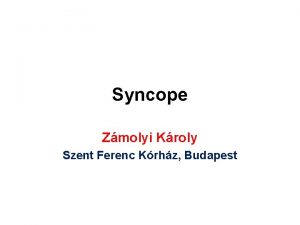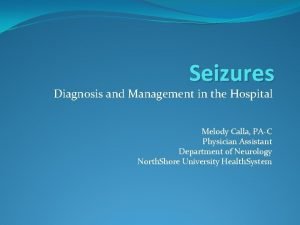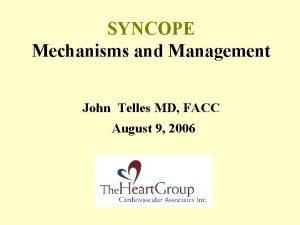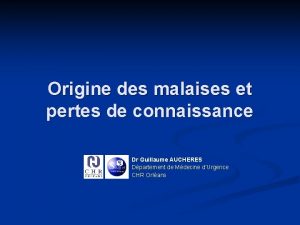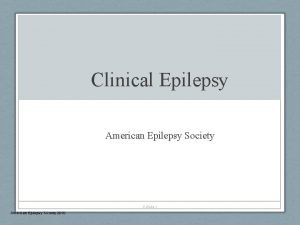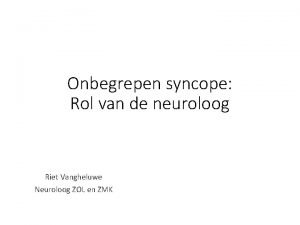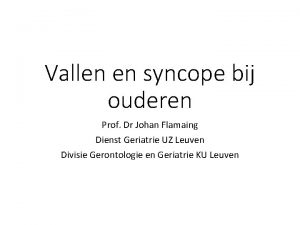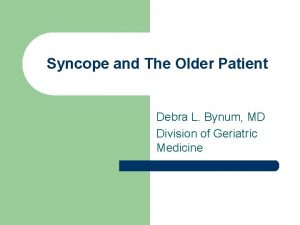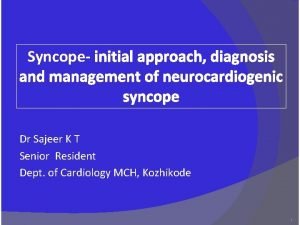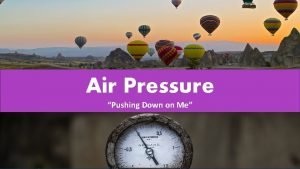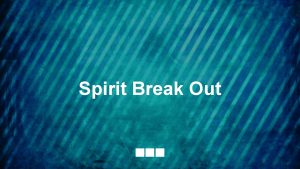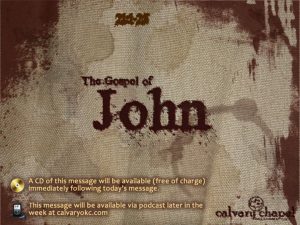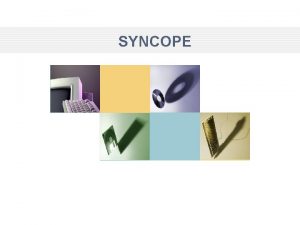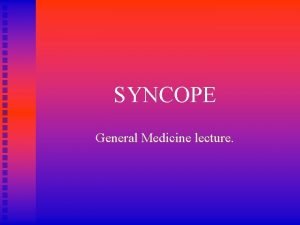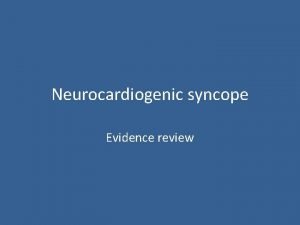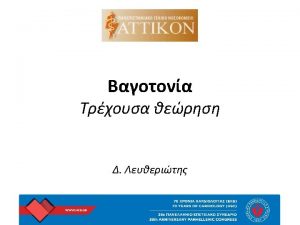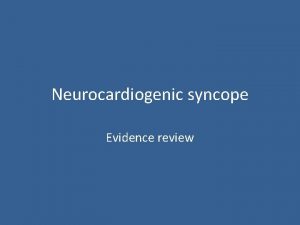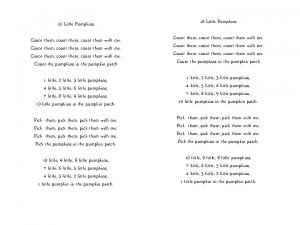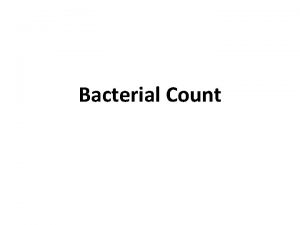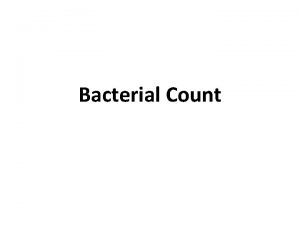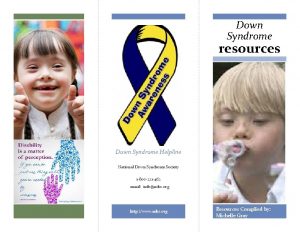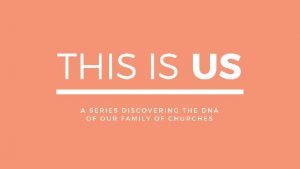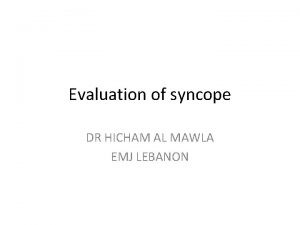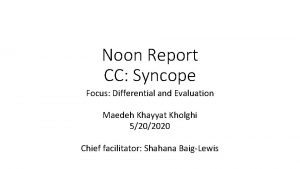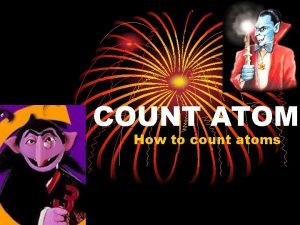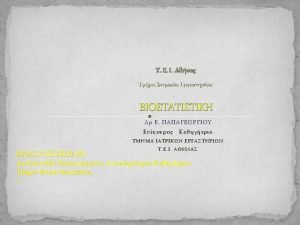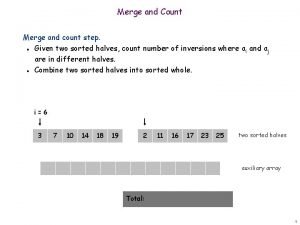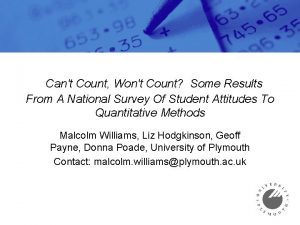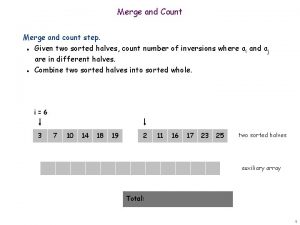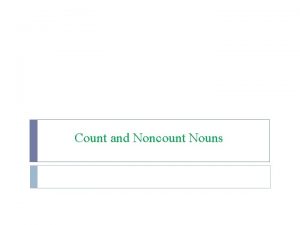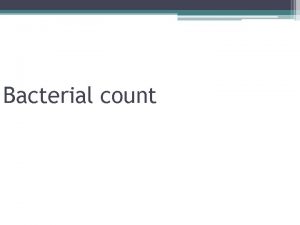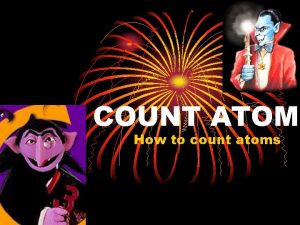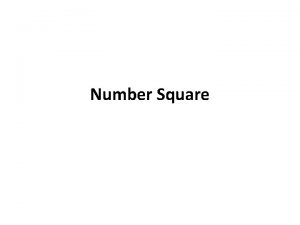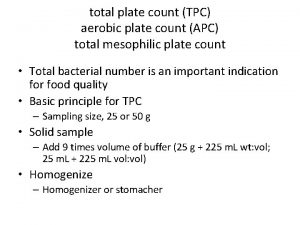Down for the Count The Evaluation of Syncope






































- Slides: 38

Down for the Count! The Evaluation of Syncope Wyatt W. Decker, M. D. Department of Emergency Medicine Mayo Clinic College of Medicine

OUTLINE • Case • Epidemiology • Signs and symptoms • What data help to risk-stratify patients with syncope? • Who should be admitted after a syncopal event?

Case Presentation • 82 -year-old male was found by son, unresponsive • When ambulance arrived, his pulse was 70 and BP was 160/98

Case Presentation 82 -Year-Old Male • History: HTN on HCTZ • Exam: Facial contusion; otherwise normal • ECG: NSR, PVCs

Case Presentation 82 -Year-Old Male • What to do? 1) Holter as outpatient 2) Echo 3) Admit for EP studies 4) Admit for 23° monitoring

Case Presentation 82 -Year-Old Male • Risk Stratification 1) High risk for an adverse event 2) Moderate risk 3) Low risk

Case Presentation 82 -Year-Old Male • Question orthostatic blood pressure 1) Always check - very useful 2) Sometimes check - can be useful 3) Never check - is useless

Case Presentation 82 -Year-Old Male Red Light: Observation Unit

SYNCOPE: Definition • A transient loss of consciousness • Spontaneous and full recovery • Loss of postural tone • No prolonged confusion

“Syncope and sudden death are the same, except that in one you wake up” Anonymous

SYNCOPE: Epidemiology • 6% hospital admits • Up to 3% ED visits • 12 -40% of young adults • 6% incidence in > 75 y/o

SYNCOPE: Natural History % Mortality 60 50 40 30 20 10 0 1 2 3 Sudden Death 4 5 0 1 2 3 4 5 Year of follow-up Cardiogenic Undetermined Noncardiac Kapoor: Medicine, 1990

SYNCOPE: Etiology - Noncardiac • Vasodepressor (12 -29%) • Situational (1 -8%) • Seizure • Psychogenic • Orthostatic (4 -12%) • Drug-induced (2 -9%) • Carotid sinus • Neuralgia • Neurologic (TIA, stroke, migraine)

Causes of Syncope: NEJM, Sept 2002 * When a participant did not seek medical attention for syncope and the history, physical examination, and electrocardiographic findings were not consistent with any of the specific causes, the cause was considered to be unknown. ^ Cough syncope, micturition syncope, and situational syncope were included in the category of other causes. Soteriades ES, et al NEJM 347(12); Sept 19, 2002

SYNCOPE: Etiology Cardiac • Obstruction to flow (3 -11%) - HOCM, AS, MS, myxoma - PS, PE, Pulm HTN - MI, tamponade, AD • Arrhythmias - Sick sinus, AV block, pacer - VT, SVT

SYNCOPE: Signs/Symptoms • Age - Those less than 45 tend to do well - Those over 65 are higher risk - Ages in between are incremental - There is no age cutoff Kapoor, et al: NEJM 309; 1983

Diagnostic Questions to Determine Whether Loss of Consciousness is Due to Seizures or Syncope

SYNCOPE: Signs/Symptoms • SZ vs. syncope • - N = 94 - SZ = 41; No SZ = 53 Logistic Regression Analysis - Not a SZ - SZ Diagnosis • Sweating, • Frothing nausea prior and • Tongue biting oriented after event • Disoriented • > 45 y/o • < 45 y/o • LOC > 5 min Hoefnagels, et al: J Neurology 238; 1991

SYNCOPE: Signs/Symptoms • Tongue-biting - 106 SZ patients vs. 45 syncope patients - Sensitivity 24%; specificity 99% • Based on 8 patients with tongue-biting Benbadis, et al: Arch Int Med 155; 1995

SYNCOPE: Signs/Symptoms • CHF = poor outcome - N = 491; 12% with syncope - Cardiac syncope; 49% dead 1 year - Noncardiac syncope: 39% dead 1 year - No syncope; 12% dead 1 year Middlekauff, et al: JACC 21: 1; 1993 - Risk factor for poor outcome in multiple studies

Orthostatic hypotension Proceed with Caution!

SYNCOPE: Signs/Symptoms Orthostatic hypotension Proceed with Caution! • Generally defined as drop in systolic BP > 20 mm. Hg on standing Present in 40% patients > 70 years Present in up to 23% patients < 60 • • • Reproduction of symptoms may be useful

SYNCOPE: Diagnostic Testing • ECG - diagnostic in 2 -12% • Blood work - low yield, not helpful • Only lab abnormalities found are those expected based on history/PE • Holter monitoring • Tilt table • Electrophysiology studies Day, et al: Am J Med 73; 1982.

SYNCOPE: Evaluation - ECG • What to look for: - VT (3 or more beats) Sinus pause (> 2 seconds) Bradycardia with symptoms SVT with symptoms or hypotension AF slow vent response 2° + 3° AV block Pacemaker malfunction Martin, et al: Ann Emerg Med 29: 4; 1997

Diagnostic Efficacy of 24 Hour Holter Monitoring for Syncope 1, 512 patients Syncope/presyncope during monitoring (17%) Documented arrhythmia (2. 1%) Arrhythmia without symptoms (15%) Gibson: AJC 53, 1984

Tilt Table Testing Positive yield (pseudo Specificity sensitivity (%) controls (%) Reproducibility (%) Passive tilt 20 -75 80 -90 60 -70 Isoproterenol 40 -85 55 -80 65 -90

Results of Electrophysiologic Testing in Patients with Syncope of Unknown Cause Reference Sra et al Di. Marco et al Gulamhusein et al Hess et al Akhtar et al Olshansky et al Patient (no. ) Abnormal EP (%) 86 25 34 32 30 105 34 68 18 56 53 37

SYNCOPE: The Dilemma • Disposition Challenge - Patients often asymptomatic in ED - Majority of causes benign - Concern of sudden death

Discord in the Evaluation of Syncope Neurologist Cardiologist

Economic Burden of Syncope Evaluation • Up to $17, 000/pt of “unnecessary” testing for diagnosis of vasovagal syncope (Calkins, 1993) • Overall cost per admission $5, 300 (HCFA, 1996) • Cost to health care system >1 billion (Olshansky, 1998)

SYNCOPE: Risk Stratification • Identify low-risk patients who need minimal testing and have a low likelihood of an adverse event • Identify high-risk patients in whom a more aggressive approach towards care is indicated

SYNCOPE: Risk Stratification • Syncope patients in ED - Derivation N = 252 - Validation N = 374 - Data: History, PE, ECG - Outcome: Arrhythmias and mortality at 1 year Martin, et al: Ann Emerg Med 29; 1997

SYNCOPE: Risk Stratification Martin, et al: Ann Emerg Med 29; 1997

SYNCOPE: Management • Risk factors: > 45 years, ventricular arrhythmia, abnormal ECG, CHF • Martin, et al - 72° cardiac mortality; 0% with no risk factors - 1 year mortality 57% with 3 - 1 year mortality 80% with 4

SYNCOPE: Management • When to admit - ACEP guidelines 1. 2. 3. 4. History CHF, ventricular arrhythmia Scenario c/w ACS Evidence CHF, valve disease on evaluation in ED Abnormal ECG 1. 2. 3. 4. Age > 60 Hx CAD, congenital heart disease Family history sudden death Exertional syncope • Consider if: Ann of EM June 2001; 37: 771 -776

Assessment of ACEP Syncope Policy N = 201 • Apply ACEP Level A & B recommendations for admission • Results: - Sensitivity 100% - 29% reduction in admits Elesber, Decker, et al: AEM May 2002; 9: 370 -371

Syncope: Summary • Etiology is often unclear • Risk stratification is key • Admit high risk patients - Intermediate risk? • Low risk: Send out

 Syncope
Syncope Keppra loading dose
Keppra loading dose Snycope
Snycope Syncope
Syncope Seizure vs syncope
Seizure vs syncope Nursing care plan for pulmonary embolism
Nursing care plan for pulmonary embolism Syncopale def
Syncopale def Syncope
Syncope Syncope in the older patient is
Syncope in the older patient is Carotid sinus hypersensitivity
Carotid sinus hypersensitivity There's a place where mercy reigns
There's a place where mercy reigns Air pressure units
Air pressure units King jesus all of heaven
King jesus all of heaven I fled him
I fled him Hands up utensils down
Hands up utensils down Tack för att ni lyssnade
Tack för att ni lyssnade Debatt artikel mall
Debatt artikel mall Påbyggnader för flakfordon
Påbyggnader för flakfordon Egg för emanuel
Egg för emanuel En lathund för arbete med kontinuitetshantering
En lathund för arbete med kontinuitetshantering Tobinskatten för och nackdelar
Tobinskatten för och nackdelar Tack för att ni har lyssnat
Tack för att ni har lyssnat Vanlig celldelning
Vanlig celldelning Verifikationsplan
Verifikationsplan Myndigheten för delaktighet
Myndigheten för delaktighet Presentera för publik crossboss
Presentera för publik crossboss Rbk-mätning
Rbk-mätning Densitet vatten
Densitet vatten Kung dog 1611
Kung dog 1611 Nationell inriktning för artificiell intelligens
Nationell inriktning för artificiell intelligens Tack för att ni har lyssnat
Tack för att ni har lyssnat Referatmarkering
Referatmarkering Start för skala
Start för skala Epiteltyper
Epiteltyper Kraft per area
Kraft per area Matte större än tecken
Matte större än tecken Autokratiskt ledarskap
Autokratiskt ledarskap Elektronik för barn
Elektronik för barn Underlag för särskild löneskatt på pensionskostnader
Underlag för särskild löneskatt på pensionskostnader
